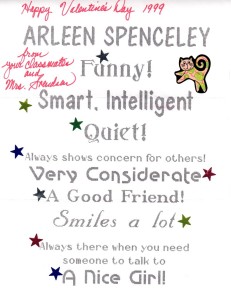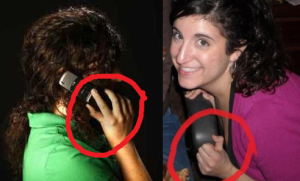In a New York Times article from Friday, a study the writer cited says a baby’s birth to an unwed mom “used to be called illegitimacy. Now it is the new normal. After steadily rising for five decades, the share of children born to unmarried women has crossed a threshold: more than half of births to American women under 30 occur outside marriage.”
The story is well written and worth the read. But what it points out is not so much “study reveals a new relationship trend” as much as “study reveals that what most people think is marriage is still not actually marriage.”
The story says:
“Among mothers of all ages, a majority — 59 percent in 2009 — are married when they have children. But the surge of births outside marriage among younger women — nearly two-thirds of children in the United States are born to mothers under 30 — is both a symbol of the transforming family and a hint of coming generational change.”
and
“One group still largely resists the trend: college graduates, who overwhelmingly marry before having children. That is turning family structure into a new class divide, with the economic and social rewards of marriage increasingly reserved for people with the most education.”
and
“Liberal analysts argue that shrinking paychecks have thinned the ranks of marriageable men, while conservatives often say that the sexual revolution reduced the incentive to wed and that safety net programs discourage marriage.”
and
“Over the past generation, Lorain lost most of two steel mills, a shipyard and a Ford factory, diminishing the supply of jobs that let blue-collar workers raise middle-class families. More women went to work, making marriage less of a financial necessity for them. Living together became routine, and single motherhood lost the stigma that once sent couples rushing to the altar. Women here often describe marriage as a sign of having arrived rather than a way to get there.“
I understand these points.
Marriage does have economic and social rewards. Most women do find men whose paychecks can pay bills to be more marriageable than men whose paychecks can’t. Many women who work don’t need a husband to pay for her stuff. A stigma once did (and sometimes still does) send couples to the altar with haste and without much thought. But these are just words that distract us from what we really ought to discuss.
The story goes on…
“‘Women used to rely on men, but we don’t need to anymore,’ said Teresa Fragoso, 25, a single mother in Lorain. ‘We support ourselves. We support our kids.’
a) This says marriage is about money. (i.e., “I don’t need a husband because I can support myself and my kid.”)
“Fifty years ago, researchers have found, as many as a third of American marriages were precipitated by a pregnancy, with couples marrying to maintain respectability. Ms. Strader’s mother was among them.”
b) This says marriage is about image. And this still says that when a couple today rushes into marriage because they’ve found out they’re pregnant. (i.e., “We’ll be treated better if it looks like we didn’t get pregnant before we tied the knot.”)
“Even as many Americans withdraw from marriage, researchers say, they expect more from it: emotional fulfillment as opposed merely to practical support. ‘Family life is no longer about playing the social role of father or husband or wife, it’s more about individual satisfaction and self-development,’ said Andrew Cherlin, a sociologist at Johns Hopkins University.”
c) This says marriage is about self. (i.e., “Marrying this man/woman will complete me!”)
And then, like in the story, people — among them, ones who live like they believe a, b and c are true — say…
“‘I’d like to do it, but I just don’t see it happening right now,’ … ‘Most of my friends say (marriage is) just a piece of paper, and it doesn’t work out anyway.'”
When the goal of a wedding revolves around money, image or self, I don’t blame women or men for a second for not wanting that stuff. I don’t want that stuff, either.
That stuff is a sheet of paper.
That stuff is not marriage.
Marriage is the miracle in which two become one. (Note: It is not 1/2 + 1/2 = 1, but 1 + 1 = 1. A spouse cannot and will not complete you, nor should he or she be expected to.) It is the mutual gift of self, given in love, which is patient and kind, neither boastful nor proud nor rude. It doesn’t demand its own way or act pissed off about and/or keep track of it every time it doesn’t get its way. It stands for justice and truth, it doesn’t give up or lose faith and it sticks around, with hope, regardless of circumstances*.
Marriage helps us “to overcome self-absorption, egoism, pursuit of one’s own pleasure, and to open oneself to the other, to mutual aid and to self-giving,**”
Which is awesome.
So why, then, are few folks our age interested in it? And why do so few married couples reveal this in their relationships? I’m of the opinion that it’s pretty complex.
Check back tomorrow for part 2.
– – – –
To read the New York Times story in full, click here.
*Within reason. If, for instance, you live with an abusive spouse, hope won’t cut it. Your spouse needs help, and you need a safety plan. Click here for more information.
**This quote comes from the Catechism of the Catholic Church.




